UK: Eastern Foxtail-lily Hawkmoth, RUS: Aeremurosovyi Brazhnik
Deilephila euphorbiae var. centralasiae Staudinger, 1887, Stettin. ent. Ztg 48: 64.Type locality: Samarkand [Uzbekistan].
(Taxonomic notes. (i) 'Subsp.' transcaspica is a local form of Hyles centralasiae and does not warrant subspecific status.
(ii) On the basis of genetic studies, the former 'subspecies' siehei (Püngeler, 1903) from the eastern Toros and Bolkar Mountains of southern Turkey, eastern Turkey, ?Armenia, ?northern Syria, ?northern Iraq, northern Iran and the Zagros Mountains of Iran (Kerman Province, from where one specimen has been recorded), is now regarded as a separate, distinct species (Hundsdörfer et al., 2009).)
Holarctic; western Palaearctic region. Pleistocene refuge: Polycentric -- Syrian, Iranian and Turkestan refugia.
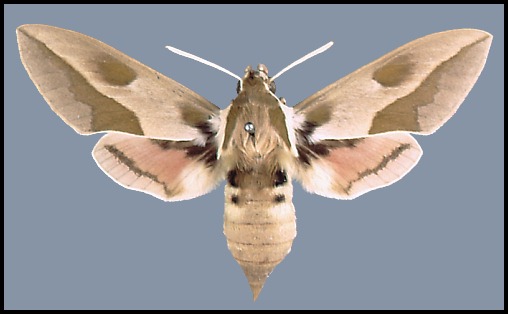
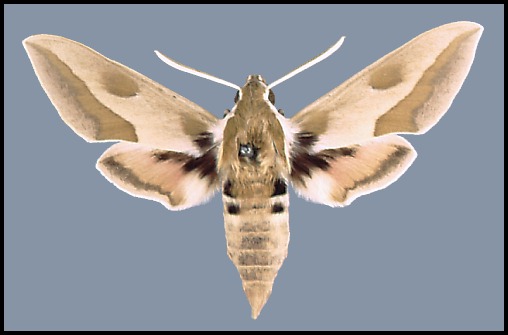
Wingspan: 60--75mm. Resembles a very pale Hyles euphorbiae euphorbiae (Linnaeus, 1758), but the pale median stripe extends to the costa and is broken only twice, basally and centrally. First segment of foretarsus shorter than in Hyles euphorbiae, with fewer, longer spines.
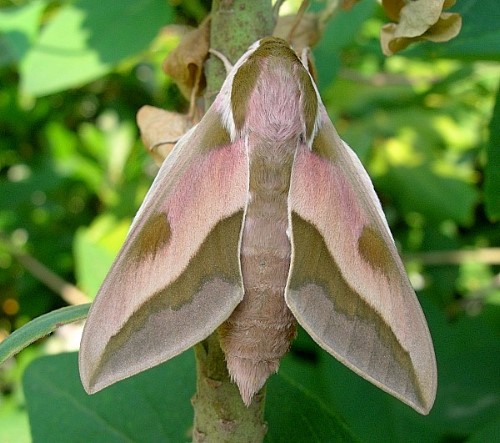
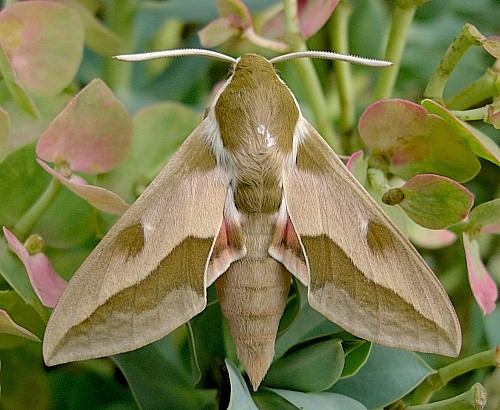
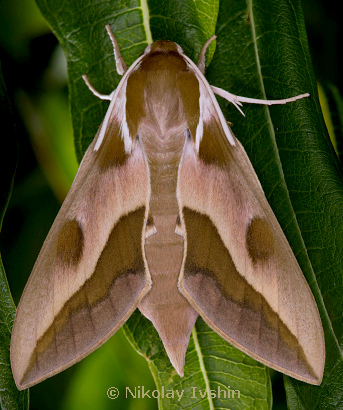
Restricted to areas where Eremurus (foxtail lily) is common on rock-strewn hill-sides; in northern Iran, usually 1000--2500m; in eastern Turkey, slightly lower.

Possibly bivoltine; between late April and early July, and July to early September, depending on altitude. June at Frunze City/Bishkek, Kyrgyzstan. (Whether this species is truly bivoltine is not known.)
OVUM: Very small (less than 1mm diam.), almost spherical, pale, glossy green. Laid directly on the unopened flowers (and seed-pods) of the host.
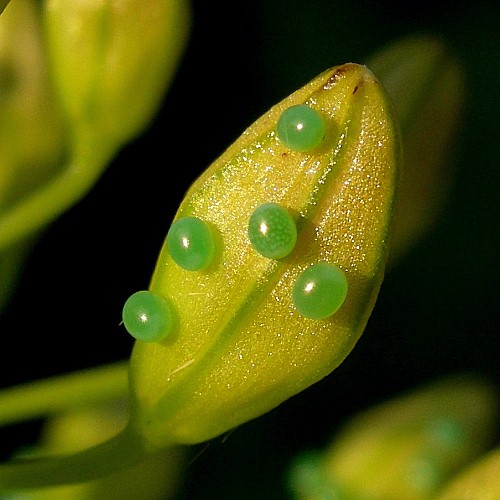
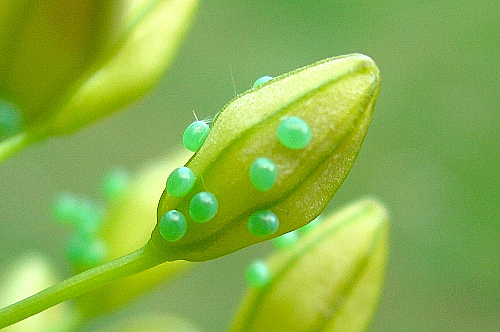
LARVA: Full-fed 70--80mm. Dimorphic: principally pale grey or off-white.
The newly-hatched 2.5mm-long larva is pale sandy-orange with a blackish brown horn (short and vertical), head, legs and shield: the body bears rows of setae of the same colour. The head and thoracic segments are tinged greenish. In the second instar the primary body colour is olive green or dark grey, with a pale yellow dorso-lateral line bearing rudimentary eye-spots, and a ventro-lateral line of the same colour. There is a hint of a red dorsal line. The third instar is similar, although the primary colour can vary from pale greyish green through greenish olive to almost black. The dorso-lateral line is more pronounced, the eye-spots pure white or white with yellow centres, and a whitish ventro-lateral line develops. The head, anal clasper and dorsal line are pale orange. In the fourth instar, the coloration ranges from pale grey to black; both forms are speckled white and bear a dorso-lateral row of round, black-ringed, startling white eye-spots. The dorso-lateral line is absent, but the ventro-lateral stripe becomes more evident, especially in the dark form. The head, legs, horn and shield are either dark brown or black.
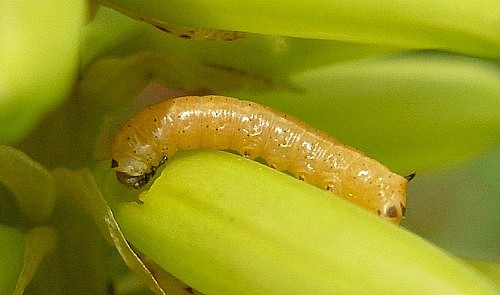
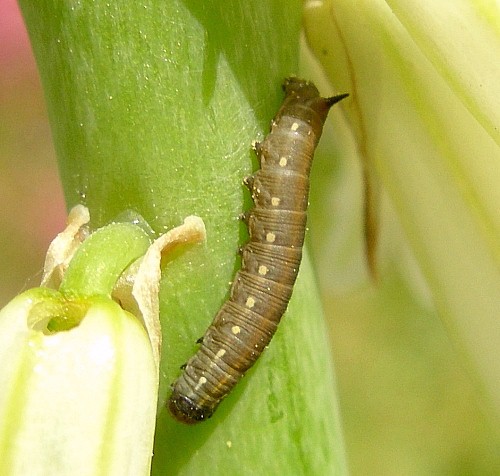
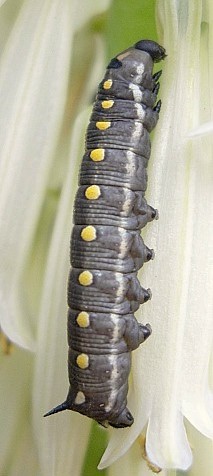
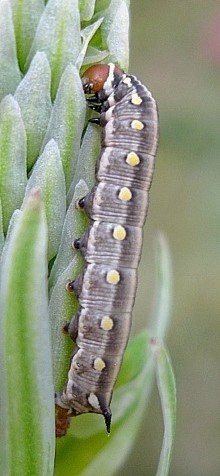
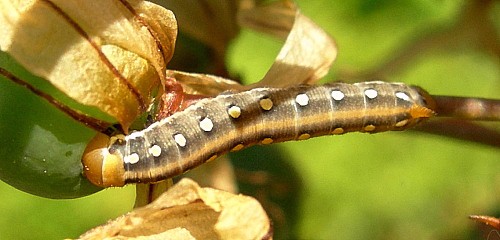
Fully grown, either pale grey or off-white, sometimes with a pale rose dorsal suffusion. Along either side a dorso-lateral line of large, brilliant white, black-ringed eye-spots. Horn, head, legs and anal flap red or black. Spiracles white, ringed with red.
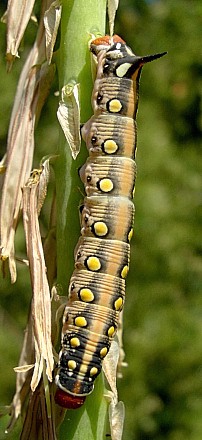
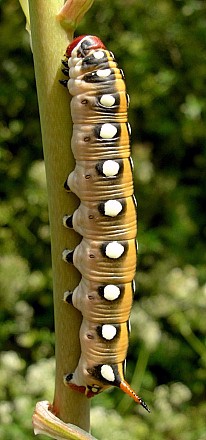
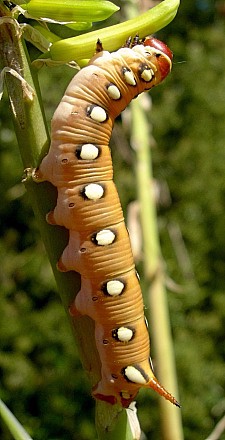
Newly hatched larvae prefer the pollen-sacs of flowers and often sit on the stamens within the flower. As they grow, all parts of the flower are eaten, including the immature ovaries. Larger larvae feeds quite openly on the tall, columnar flower- and seed-spikes of the hostplant, alternating frenzied bouts of feeding with long spells of basking.
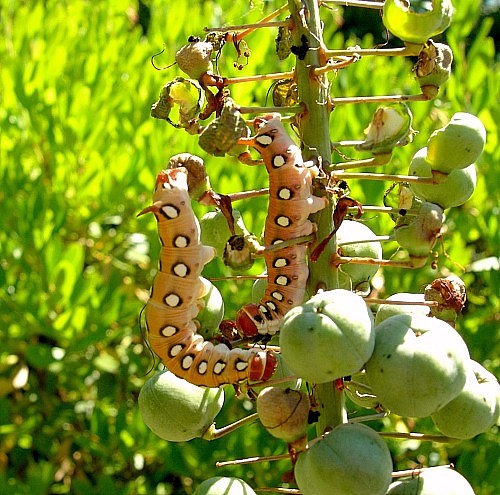
Most likely to be found in May, June, August and September. Grum-Grshimailo (1890) reported larvae to be common in southern Tajikistan during July, although he mistakenly identified them as Hyles hippophaes bienerti (Staudinger, 1874).
Major Hostplants. The flower- and seedheads of Eremurus, especially Eremurus ammophilus, Eremurus anigapterus, Eremurus ambigens, Eremurus olgae and, in Afghanistan, Eremurus stenophyllus (Daniel, 1971). On Eremurus tianschanicus Pazij & Vved. ex Pavlov in Kyrgyzstan (Toropov, Milko, Zhdanko & Evdoshenko, 2023). This raises a number of interesting questions for, if Hyles centralasiae feeds almost exclusively on Eremurus, then it cannot have a second generation -- this plant only flowers in the spring. However, adults have been captured in August and September. Either this is a partial 'suicide' generation, doomed to perish without reproducing, or these individuals are part of a very late spring brood, or this species also feeds on an an autumn flowering member of the Xanthorrhoeaceae/Asphodelaceae/Asparagaceae, such as Drimia (formally known as Urginea).
Minor Hostplants. The seedheads of Asphodelus and Asphodeline, both in the Xanthorrhoeaceae/Asphodelaceae. [In captivity this species can be reared on the flower- and seed-spikes of Kniphofia and, sometimes, Epilobium angustifolium. Adults will certainly oviposit on the latter.] Laboratory trials with plants other than Eremurus, e.g. Euphorbia, Medicago, Zea mays, resulted in slower growth rates and poorer diapause performance, with Euphorbia showing the best results as an alternative host (Omonov & Raximov, 2023).
PUPA: 40--50mm. Pale brown, in a loosely spun, net-like cocoon amongst ground debris. The overwintering stage. It can sometimes remain in this stage for more than one year, up to a maximum of 6 years (Derzhavetz, 1984).
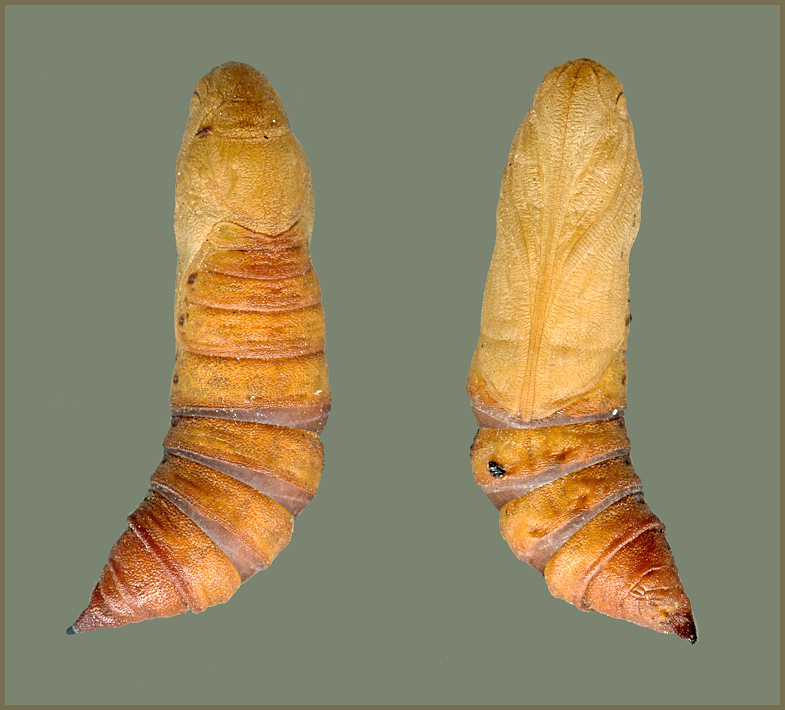
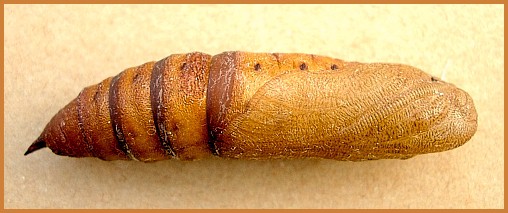
None recorded.
From northeastern Iran, southern Turkmenistan (Danov & Pereladov, 1985; Derzhavets, 1984; Toropov, Milko, Zhdanko & Evdoshenko, 2023), mountainous eastern Uzbekistan (Shovkoon, 2010; Omonov & Raximov, 2023; Omonov, Rahimov, Askarova & Khomidova, 2023), mountainous parts of southeastern Kazakhstan (Danner, Eitschberger & Surholt, 1998; Toropov, Milko, Zhdanko & Evdoshenko, 2023), Tajikistan (Grum-Grshimailo, 1890; Bang-Haas, 1936; Jonathan Newman, iNaturalist 2023) and Kyrgyzstan (Kondratiev coll., NHMUK; Korb, 2018; Toropov, Milko, Zhdanko & Evdoshenko, 2023; Thuuughut, iNaturalist 2023) to northern and eastern Afghanistan (Ebert, 1969; Daniel, 1971), western Pakistan (Daniel, 1971; Rafi et al., 2014), northern Xinjiang Province, China (Pittaway & Kitching, 2000) and southwestern Mongolia (Yakovlev, Dubatolov & Titov, 2013; Yakovlev & Doroshkin, 2017).
Although quite common, its distribution is not fully understood due to confusion with other related species.
Extra-limital range. None.
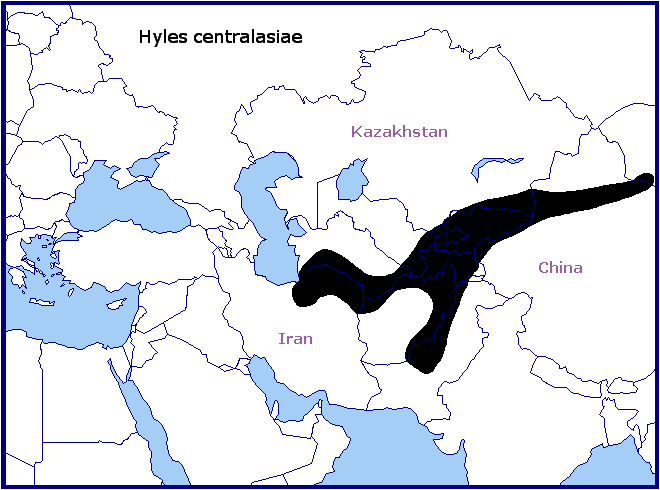
None.
 Return to species list
Return to species list